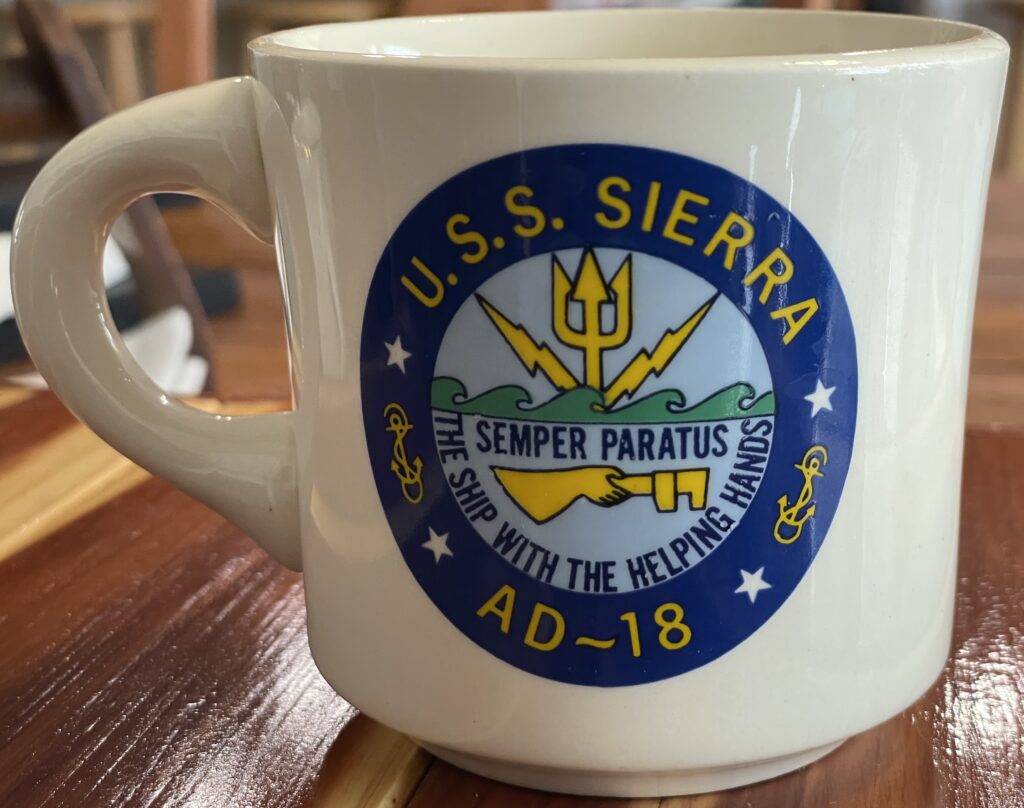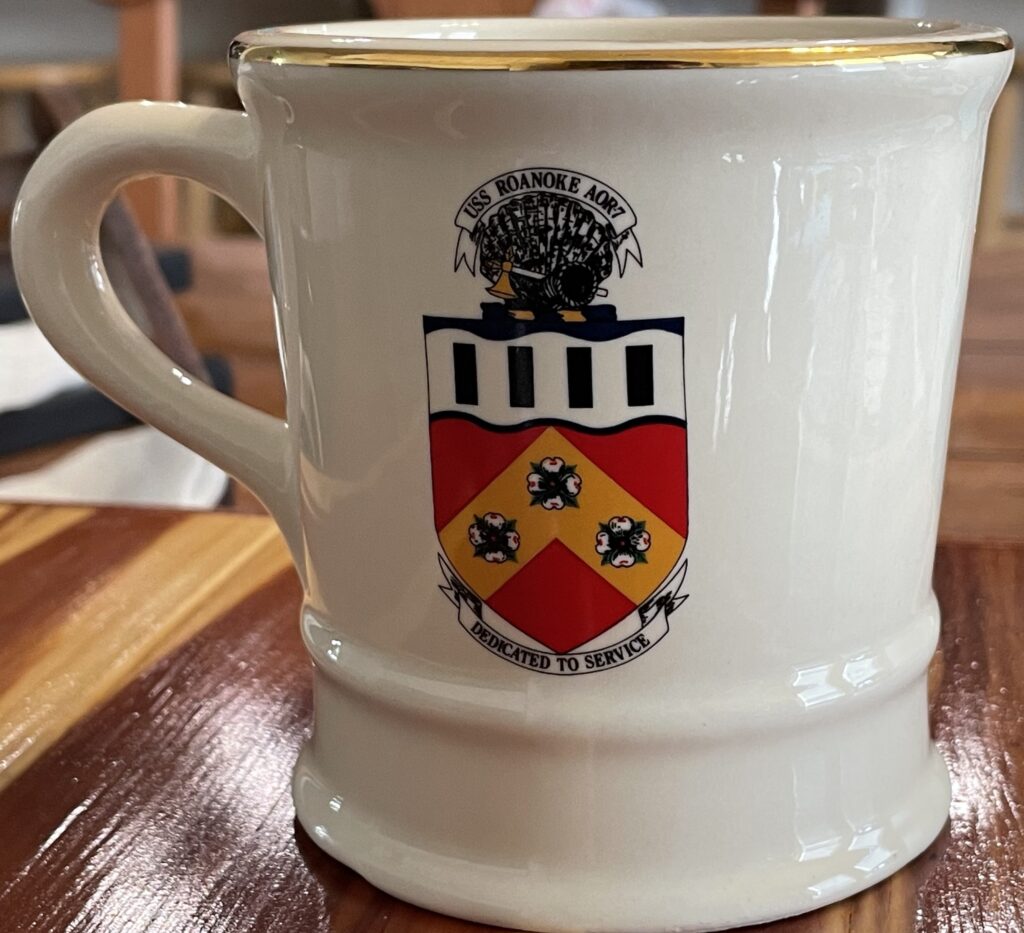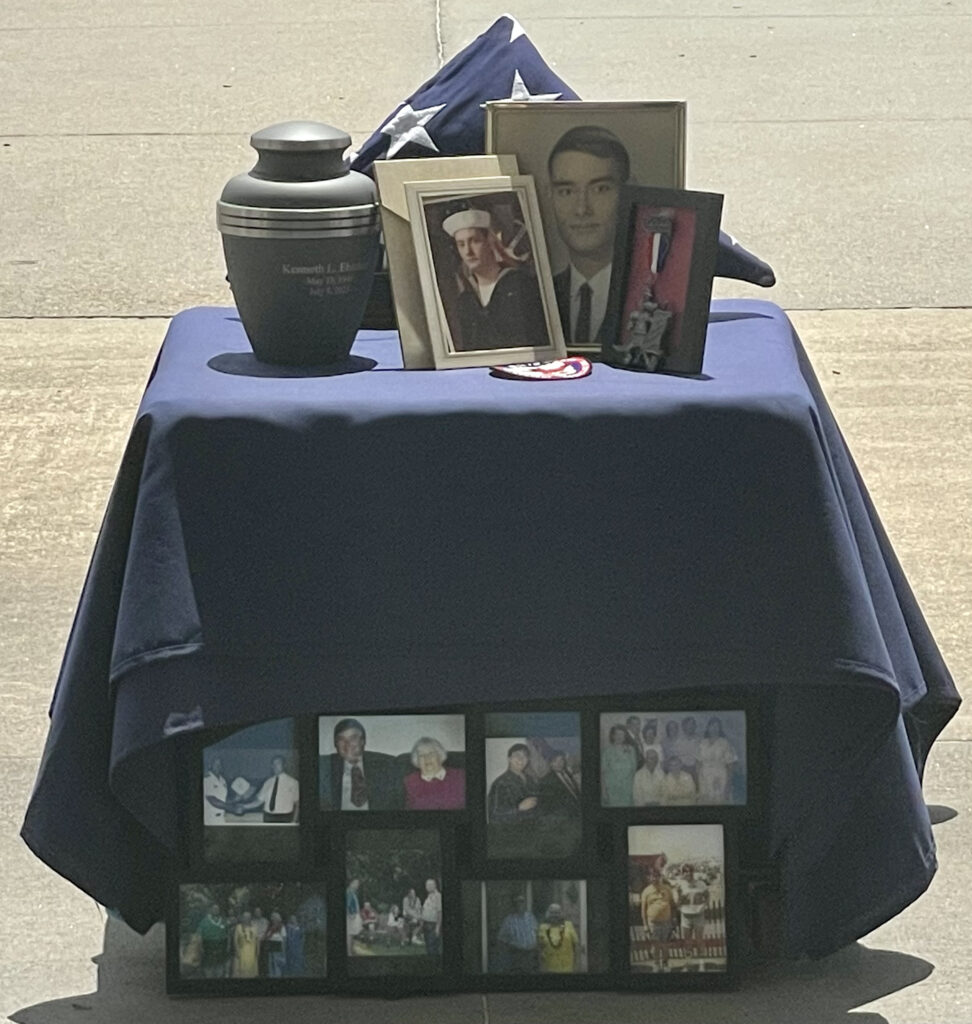“Amateurs talk about tactics, but professionals study logistics.”
–Gen. Robert H. Barrow, USMC
–Seabeecook.com, quoting an article from the August 1949 “All Hands” magazine
When we talk about the Navy, battleships, submarines, and aircraft carriers get all the love. And let’s fact it, those are sexy. Things like the LCS, maybe less so.
But someone has to support those ships. Somebody’s got to deliver fuel and mail and toilet paper and repair parts and coffee and a million other things.
Those people serve just as heroically as the folks on the sexy ships. Sometimes, they go in harm’s way as well.
The USS Sierra was a destroyer tender (one of five known as the Dixie class) and was commissioned on March 20, 1944.
She was attached to the United States Third Fleet and serviced its ships until February 1945. Her most outstanding accomplishments were the replacement of a complete 5-inch (127-mm) gun mount on the battleship USS California (BB-44) and rebuilding the starboard stern of the destroyer USS Claxton (DD-571), which had been severely damaged by a kamikaze in Leyte Gulf.
Sierra was underway from Seeadler Harbor on 18 February en route to Purvis Bay, Solomon Islands. She repaired a fleet of tank landing ships (LSTs) in preparation for the assault on Iwo Jima and then proceeded, on 15 March, to Ulithi, Caroline Islands. She serviced units of the United States Fifth Fleet there until 25 May when she departed for San Pedro Bay, Philippines, on Leyte Gulf.
The intent was for Sierra to support the invasion of the Japanese home islands, but we all know what happened there. After the war, Sierra stayed in service. It seems like she made a few cruises to the Mediterranean and Guantanamo Bay, but was primarily stationed in Norfolk (and, starting in 1974, Charleston) servicing other ships. Sierra was commended for helping clean up the city of Mobile after Hurricane Frederic, and also helped clean up in South Florida after Hurricane Andrew.
When Sierra was decommissioned on October 15, 1993, she was the oldest active duty ship in the Novy at the time. By Navy tradition, the oldest active duty ship is allowed to fly the First Navy Jack.
USS Roanoke was a “replenishment oiler” (one of seven Wichita class ships). She was commissioned on October 30, 1976.
Roanoke sailed for her first deployment to the western Pacific in January 1978, where she supported various USN units, including the USS Enterprise (CVN-65), USS Long Beach (CGN-9) and USS Truxtun (CGN-35) during the Australian leg of their deployment, docking in Fremantle, Western Australia from 7–10 August 1978. After 10 months away USS Roanoke finally returned to her homeport of San Francisco, California, in October. This set the pattern for the next twelve years, as she was deployed on a voyage to the western Pacific and Indian Ocean, each lasting six to eight months, every year.
Between January 1991 and August 1993 she sailed on two deployments to the Persian Gulf supporting Operation Desert Storm. She made one last deployment to the western Pacific in June to December 1994, before being decommissioned.
Roanoke was decommissioned on October 6, 1995. According to Wikipedia, she was part of the National Defense Reserve Fleet for a bit, and was sold for scrap in 2012.
Both of these mugs came from my late uncle Ken’s house. They were displayed in a prominent place there: I think he served on both of these ships.
On this day, you might give a thought and a prayer (if you’re so inclined) to the people who support the people who get all the attention.


